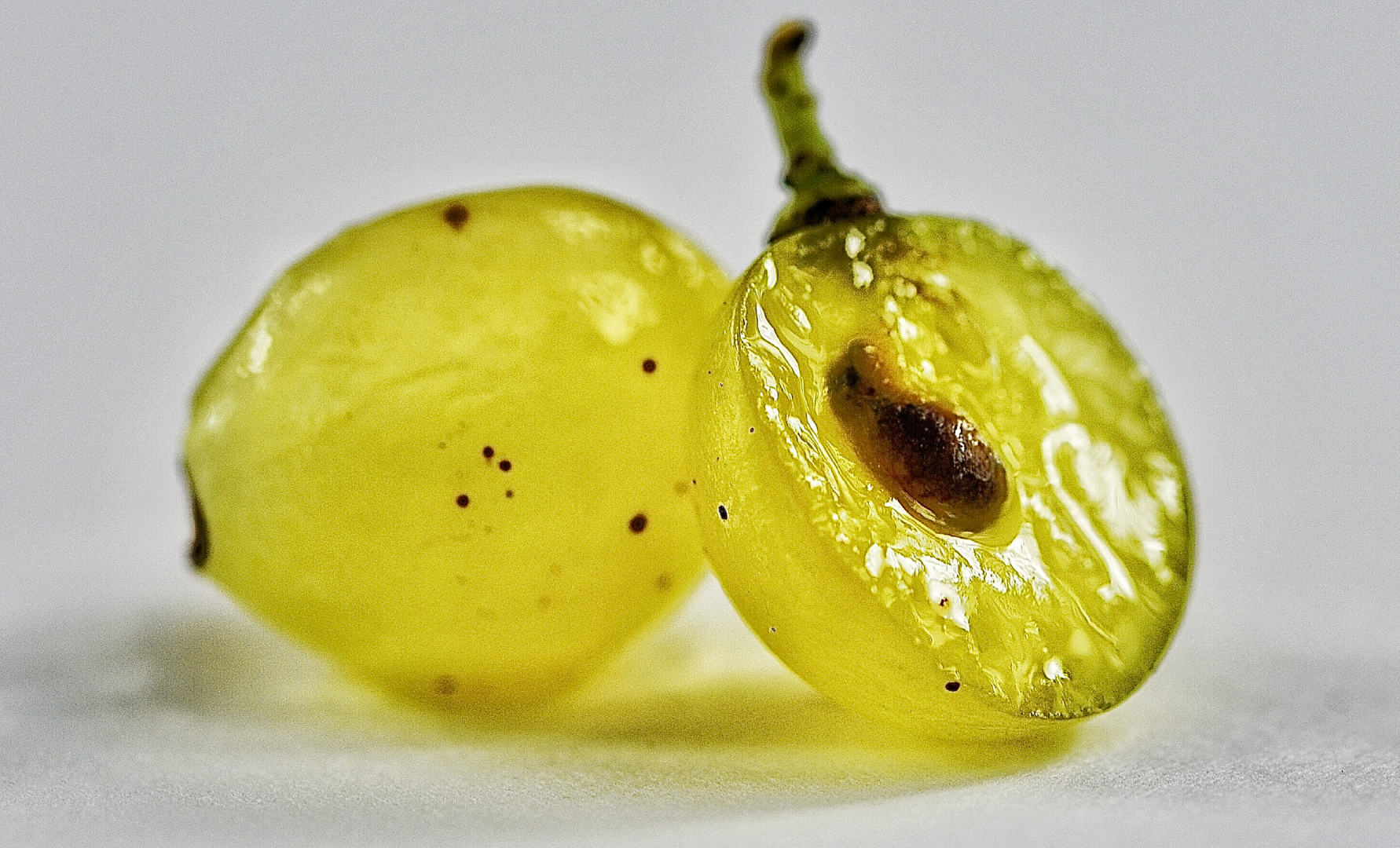The grape berry and its characteristics
A grape berry has a complex structure and contains a wealth of substances, which will emerge when the wine is tasted. It may be small, but a grape berry is extraordinarily interesting in terms of its intrinsic characteristics and what is obtained from its pressing. Let’s have a look at its component parts.
Summary
The bloom and the grape skin
The external part of the grape has a cuticle covered with opalescent wax – the bloom – which contains the yeasts responsible for alcoholic fermentation (Saccharomyces cerevisiae) and bacteria.
The skin – also called exocarp or epicarp –, composed of 6-10 layers of cells, is where we see the formation of:
- aromas, thanks to sunlight and the influence of numerous other elements: vineyard aspect, plant density, rootstock, canopy management, use (or not) of fertilizers, date of harvest, weather trends during the growing year.
Since these elements interact with each other, the real problem is knowing how to distinguish which of them (and to what extent) affects the formation of the aroma, so that they can be taken into account for the production of quality grapes.
- polyphenols, i.e. the pigments that give colour to the wine (anthocyanins), and fine-grained tannins – substances that give the sensation of astringency when tasting a red wine.
Grape pulp and its characteristics
Under the skin there is the pulp from which the must is obtained. Water represents about 70-80% of all the substances present.
The pulp is made up of two layers:
- the mesocarp has fleshy, juicy pulp, rich in sugars, which increase as the grape ripens. It has good levels of malic acid, but is low in polyphenols.
- the innermost area – the thin, soft endocarp – envelops the seeds, or grape pips, has low levels of sugary substances, and is rich in acids and mineral salts.
The other components of the pulp are:
- nitrogenous substances: proteins, ammonium salts and amino acids. The latter two are used by yeast to produce the proteins necessary for its multiplication during alcoholic fermentation.
- the polysaccharides that determine the structure of the pulp: pectins, gum, mucilage
- vitamins, in particular vitamin C which protects polyphenols from oxidation, vitamin A present in the peel and grape seeds, and vitamin B. which promotes the multiplication of yeasts
- enzymes, which are proteins that increase the rate of a chemical reaction.
The seeds or pips
In the heart of the berry are the seeds – or grape pips – composed of an external woody coat that contains bitter, particularly astringent tannins. Precisely because of these unwanted organoleptic characteristics, they are removed a few days after the start of fermentation. The constituent substances are: lipids, carbohydrates, nitrogenous and tannic substances.
The pedicel and the pad
The pedicel holds the grape to the stalk. It has a woody structure, and during harvest can be used for the empirical measurement of berry ripeness, thanks to the layer of pulp that remains attached to the pedicel; this layer is known as the brush. The wide part of the pedicel attached to the grape is known as the pad.
Could it be interesting for you:
None found


